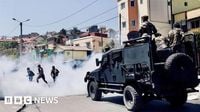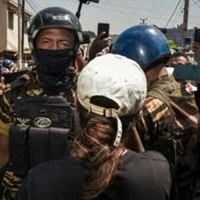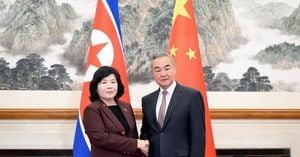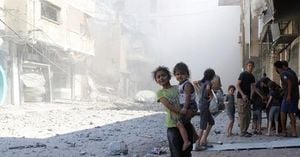Madagascar, a nation of 31 million perched off Africa’s east coast, is in the throes of its most significant political crisis in years. The past week has seen thousands of young protesters—many self-identifying as Gen Z—take to the streets of Antananarivo and at least eight other cities, voicing deep frustration over chronic water and electricity shortages, poverty, and what they describe as years of government mismanagement. The protests, which began on Thursday, September 25, 2025, have since escalated into a national emergency, drawing comparisons to recent youth-led movements in Nepal, Indonesia, and Kenya.
The government’s response has been dramatic. On Monday, September 29, President Andry Rajoelina announced the sacking of Prime Minister Christian Ntsay and the entire cabinet in a televised address. “Your demands have been heard, and I apologize if there are members of the government who have not done the work that the people expected,” Rajoelina said, according to the Associated Press. He invited applications for the prime minister’s post, promising a three-day review period before forming a new government. Until then, the dismissed officials would stay on in an interim capacity.
This move, intended to quell the unrest, did little to pacify demonstrators. On Tuesday, September 30, protest organizers called for fresh rallies in the capital at 11:00 am local time, according to AFP. The sense among many young people is that the government’s action is too little, too late. “They call us the TikTok generation, a generation of idiots, and when we rise up, they won’t even let us speak,” a student protester told AFP, dressed in black to mourn those killed. She added, “Mr Andry Rajoelina, when you led protests, you were allowed to, it was fine. But when we young people rise to fight for our country, you try to silence us.”
At the heart of the demonstrations are the daily struggles of ordinary Malagasy citizens. Widespread poverty has worsened in recent years, with the World Bank recording sharp rises in urban hardship. The failure of authorities to provide reliable water and electricity has become a flashpoint, with protesters carrying placards reading “Justice for Madagascar,” “Leo” (Malagasy for “we’re fed up”), and “We want to live, not just survive.” Many have adopted symbols from the Japanese anime series “One Piece”—specifically, the cartoon skull and bones image on flags and T-shirts—mirroring tactics seen in other youth protest movements across Asia.
The unrest has come at a steep cost. According to the United Nations human rights office, at least 22 people have been killed and more than 100 injured since the protests erupted. The UN blames a “violent response” by security forces, including the use of live ammunition, tear gas, beatings, and arrests. “I urge the security forces to desist from the use of unnecessary and disproportionate force and to immediately release all arbitrarily detained protesters,” UN human rights chief Volker Türk said in a statement carried by the BBC. The UN noted that victims included both protesters and bystanders, some killed by security forces and others during violence and looting by unrelated gangs.
However, Madagascar’s government has disputed the UN’s figures, calling them “unverified” and “based on rumors or misinformation.” The foreign ministry issued a statement flatly denying that 22 people had died, though it offered no alternative numbers. President Rajoelina himself expressed sympathy for those who had lost loved ones but did not provide an official casualty tally. This lack of clarity has fueled further anger and suspicion among demonstrators.
The protests have not been limited to peaceful marches. Over the past five days, demonstrators have barricaded roads with burning tires and rocks, and several stations of Antananarivo’s new cable car public transport system have been set ablaze. Local media reported attacks on the homes of politicians close to Rajoelina, while widespread looting broke out in the capital following last week’s rallies. Some within the “Gen Z” movement allege that paid goons have been sent to loot buildings and undermine their cause, a claim that has not been independently verified.
The government’s imposition of nighttime curfews—first in Antananarivo and then in other major cities—has done little to stem the tide of unrest. Police and security forces have responded with rubber bullets, tear gas, and, according to multiple reports, live rounds. Thousands have returned to the streets day after day, undeterred by the threat of violence or arrest. The BBC described the movement’s rallying cry as “We want to live, not survive,” a sentiment echoed on banners and in interviews with protesters.
The current upheaval is the most serious challenge to Rajoelina’s rule since his controversial re-election in 2023, a vote boycotted by most opposition candidates. Rajoelina, 51, first came to power in 2009 after a coup ousted then-president Marc Ravalomanana. After stepping aside in 2013 under international pressure, he returned to office in 2018 and has since faced mounting criticism over governance and living standards.
Madagascar’s history is marked by political instability, with multiple uprisings since independence in 1960. Yet the scale and energy of the current protests—driven largely by young people mobilized via social media—are unprecedented in recent years. Inspired by similar movements in Indonesia and Nepal, Madagascar’s youth have shown remarkable organization and resilience. “We don’t want trouble, we just want our rights,” read a banner at one of last week’s demonstrations, according to the BBC.
Despite the president’s pledge to “find a solution to the country’s problems,” the protesters remain skeptical. Many see the government’s dissolution as a cosmetic gesture rather than a substantive response to their grievances. As one protester put it to AP: “We want to live, not just survive.” The coming days may determine whether Rajoelina’s gambit—firing his government and inviting new leadership—will be enough to restore calm, or whether Madagascar is headed for a longer period of upheaval.
For now, the streets of Antananarivo and beyond remain charged with tension, hope, and the unmistakable sense that a generational reckoning is underway.





